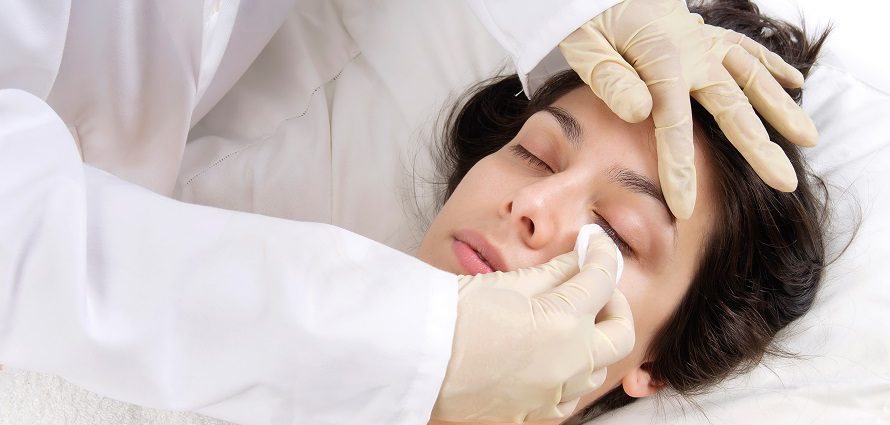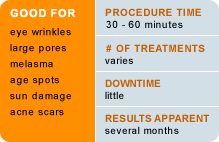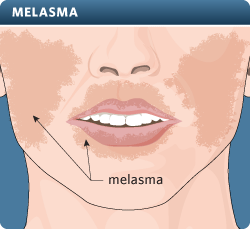Fraxel Laser – Skin Rejuvenation

Reviewed by Richard O. Gregory, MD

Laser skin rejuvenation is one of the five most popular nonsurgical cosmetic procedures performed in the United States, according to statistics from the American Society for Aesthetic Plastic Surgery. The laser du jour for skin rejuvenation is the Fraxel. There are three varieties including Fraxel re:fine, Fraxel re:store and Fraxel re:pair.
The Fraxel laser treats a mere fraction of the skin’s surface. In fact, only 15 to 20 percent of the skin is affected by Fraxel laser treatment.
Fraxel skin rejuvenation creates tiny wounds in the deeper layer of the skin (dermis). Each wound is surrounded by untreated skin, helping to repair the treated area via a controlled wound-healing process. The epidermis remains undamaged while the deeper layer begins to heal. Old skin cells slough off and the skin gradually repairs itself, encouraging collagen regeneration.
A protein found in connective tissue, collagen maintains the skin’s integrity, but breaks down with advancing age. The breakdown of collagen can lead to the development of wrinkles, lines and folds in the skin. Regenerating collagen, however, can improve skin elasticity, tone and appearance.

Fraxel Candidates
Got age spots? Sun damage? Acne scars? Wrinkles near the eye? If so, you may be a candidate for Fraxel laser rejuvenation.
Fraxel laser therapy is approved for a variety of rejuvenating treatments, including the shrinking of large pores. It is the first and only laser approved for treatment of melasma (the mask of pregnancy), a condition marked by brown patches on both sides of the face, including the cheeks, bridge of nose, forehead and upper lip. Fraxel therapy can be used to treat the neck, chest and hands.
Preparing for Fraxel Laser Treatment
Your doctor will clean your skin, after which a topical anesthetic will be applied approximately one hour before initiating Fraxel laser treatment. When the procedure begins, you will likely feel slight pressure with each pulse of the laser. It may feel like a rubber band snapping against your skin. The treatment takes approximately half an hour to an hour to complete, depending on the size of the treated area.
Following Fraxel treatment, your skin will be pink for a few days. This laser skin rejuvenation treatment involves little down-time, meaning you can go from your doctor’s office right back to your office and no one will be the wiser. You may feel like you have a sunburn. Some people develop a slight tan a few weeks after treatment.
Multiple treatments are frequently necessary and are done once a month, but the exact number of Fraxel treatments needed to achieve your desired results will vary.
It’s smart to keep the skin moisturized after treatment with the Fraxel laser. Also, wear sun protection with a sun protection factor of 30 or above that is re-applied as much as possible during the day. You can wear makeup to hide some of the redness. The full results will usually evolve over several months post treatment.
Fraxel Cost
Treatment usually ranges from $400 to $1,000 per session, depending on the area size, but Fraxel costs vary. While Insurance may offer some coverage, it rarely covers the full cost of Fraxel treatment.
Choose a Qualified Doctor
Consult a plastic surgeon or dermatologist who has extensive experience using the Fraxel laser. Ask about the surgeon’s credentials, training and experience using the Fraxel laser. Also ask to see before and after photos of others who have been treated with the Fraxel laser by the same doctor. Your surgeon can also answer questions about other types of laser procedures, such as SmartLipo for liposuction surgery, and can discuss cost of procedures, including information about liposuction surgery cost or Botox Vs Dysport injections cost.
About the Reviewer of This Article
Richard O. Gregory, MD, is a plastic surgeon board certified by the American Board of Plastic Surgery. He has been trained as a general surgeon and is also board certified by the American Board of Surgery. Dr. Gregory is an associate clinical professor of surgery in the division of plastic and reconstructive surgery, at University of South Florida in Tampa. He is in private practice in Celebration and Altamonte Springs, Fla.


